CQRS way
- Typical architecture pros & cons
- CQRS concept
- Code example
- Pros & cons
Based on Greg Young's notes and OMD Vision, ADZU team
experience
Typical architecture
- ORM (NH, EF)
- MS SQL
- DDD (Entity, Repository, Service)
- WebApi CRUD (REST) services
What the problem?
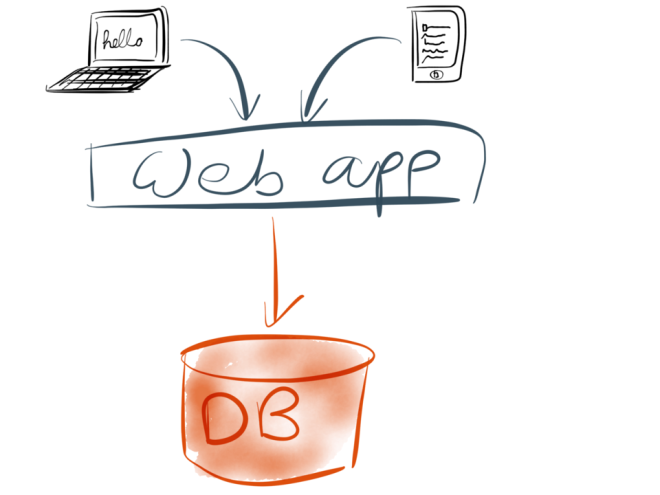
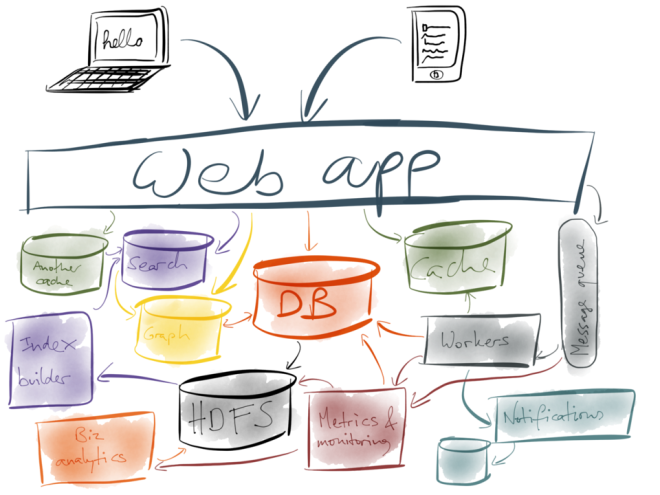
Problems
- You can’t do DDD
- Anemic domain model
- No aggregates
- As result Business logic is blur (server, client, dev mind)
- Lazy loading
- Query optimization is punishment
- One repository method for different reason
- Leads to entity pollution
- Data loss due to storing last state
- Doesn’t scale
- Very expensive horizontal scale, and limited vertical
- Transaction and locks for readers
Why do we use
- Experience, it works at least
- Devs understand it
- Mature
- You can google any problem
- Tooling
- Microsoft, Oracle propagation
- They benefit from this architecture!
- There isn't any other option
- or is there?
Free your mind
- Save state vs history
- We are lucky, CQRS started to live in .NET
- Greg Young and Jonathan Oliver are fathers
- CQRS completely different approach
- With pros and cons, all about trade off
- No silver bullet
-
Time for app to lose weight

How?
CQRS Concept
Command Query Responsibility Segregation

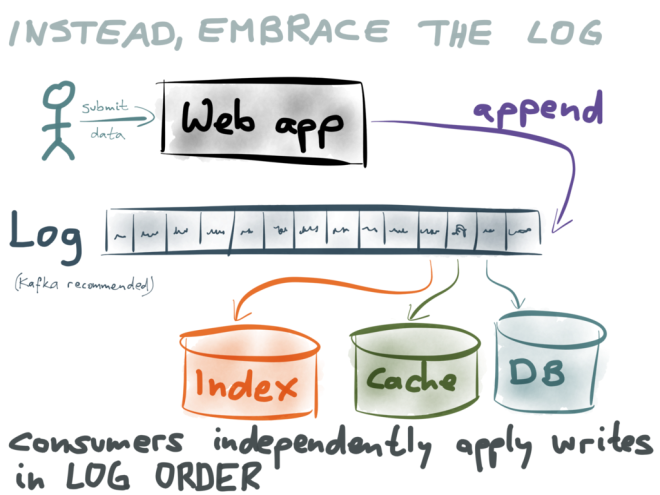
Concept

Aggregate
- Reply
- Snapshot


Horizontal scale

Advantages
- Simplicity due to real DDD
- Fast read (Thin read layer or SQLite, BerkeleyDB)
- Flexible read optimization
(MS SQL->Redis,ElasticSearch)
- Time-travel (Reproduce bug)
- Easy horizontal scaling
- Read side scaling without limitation
- Write side is scaled by sharding ToMD5(id) % 10 + 1 // 1..10
- Across data centers, node on demand
- No data loss due to storing all events
- Audit, big data ready (forecast, fraud
detection, debug)
- Sophisticated reporting
- Users who created >10 companies per month during 3 month at 2012; Activity stream
- Integration for free due to event sourcing
Disadvantages
- Hard to understand at the beginning (eventual vs transactional consistency)
- Feature implementation takes more time
- Extra code should be written (command, event, projection)
- Fit for system with <30% writes
- Hot fixes slower, no possibility to run SQL to fix
- Long projection rebuild (in-mem, background, rebuild changed)
- Read side lag (due to eventual consistency)
- Painful aggregate refactoring
CQRS code examples:
- Controller write
- Command
- Command handler
- Aggregate
- Event
- Projection
- Controller read
- Write database
Controller write
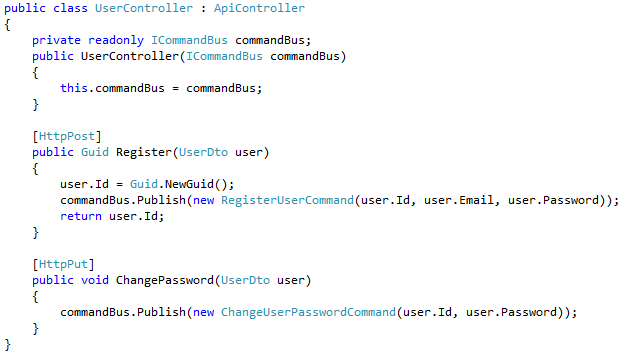
Command
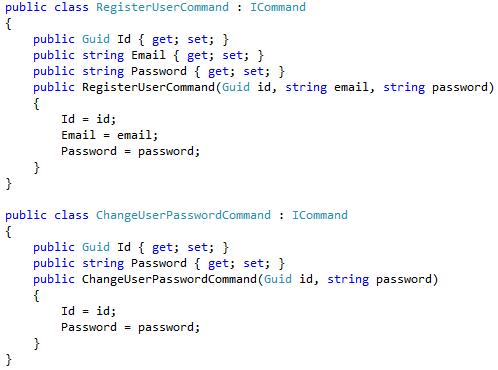
Command handler

Aggregate

Event

Projection

Controller read

Write database

Questions

CQRS overview (rev 2)
By Vladimir Gaevoy
CQRS overview (rev 2)
- 2,404


